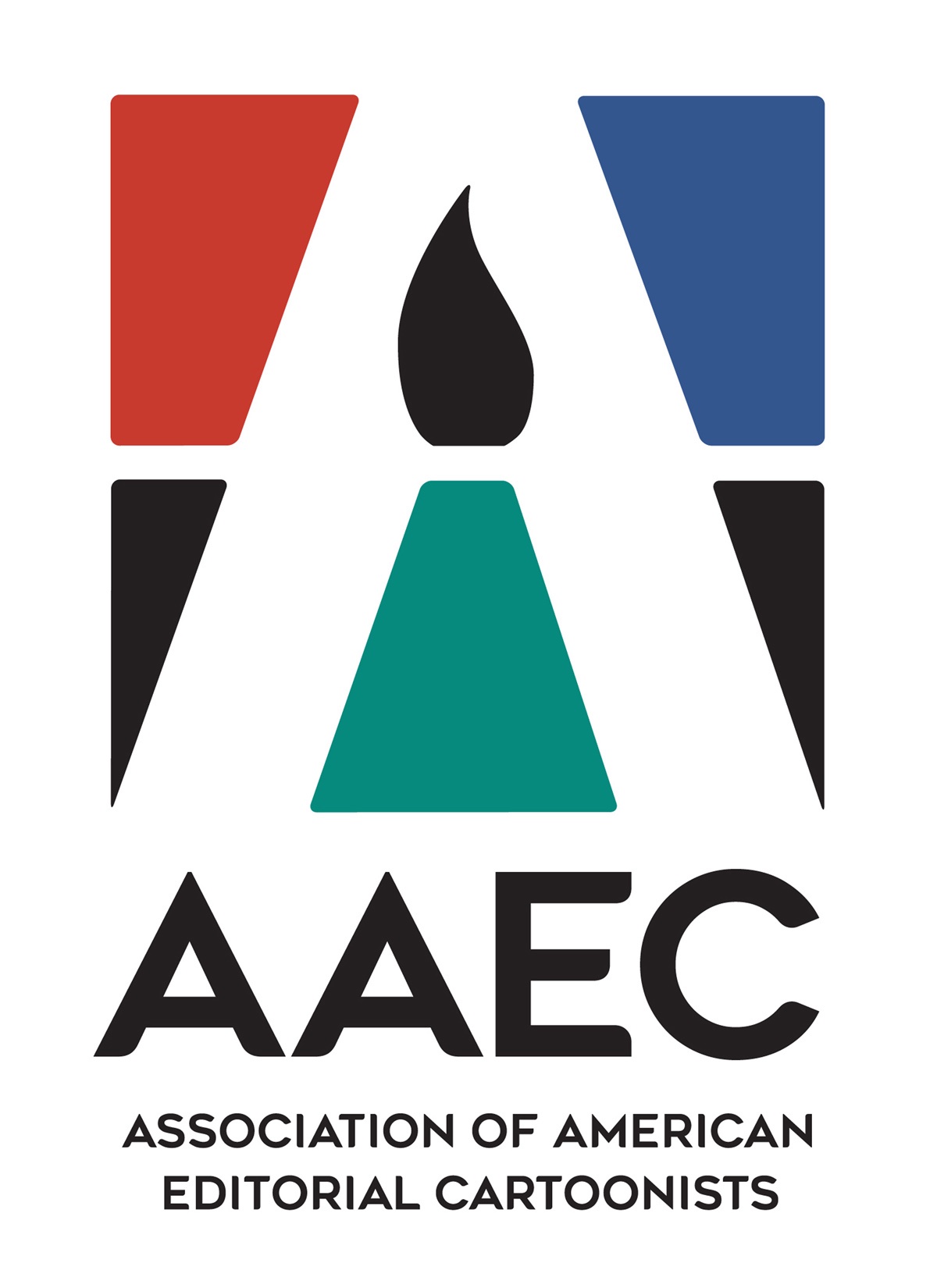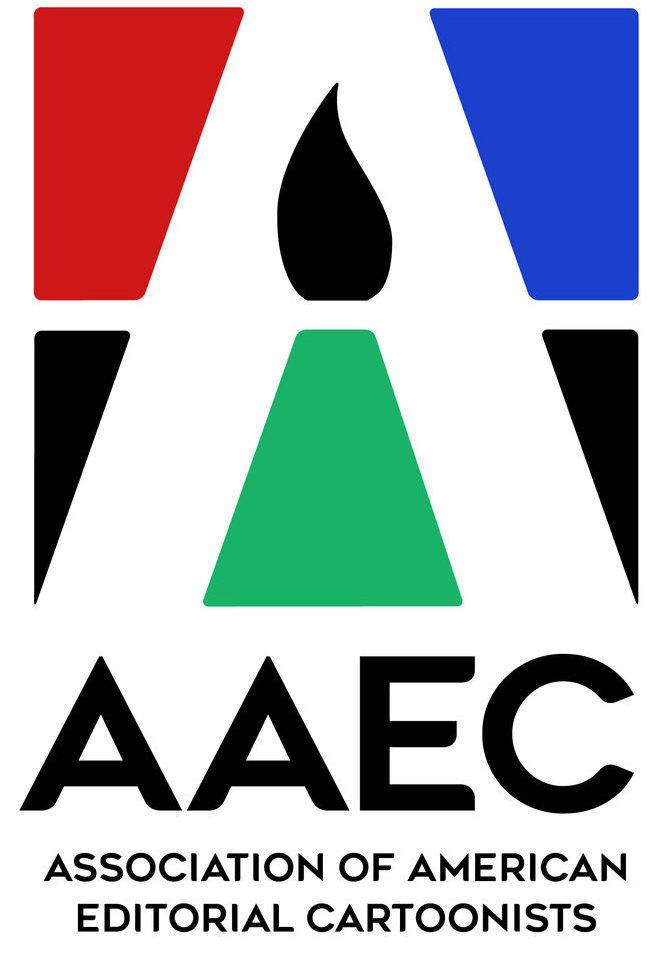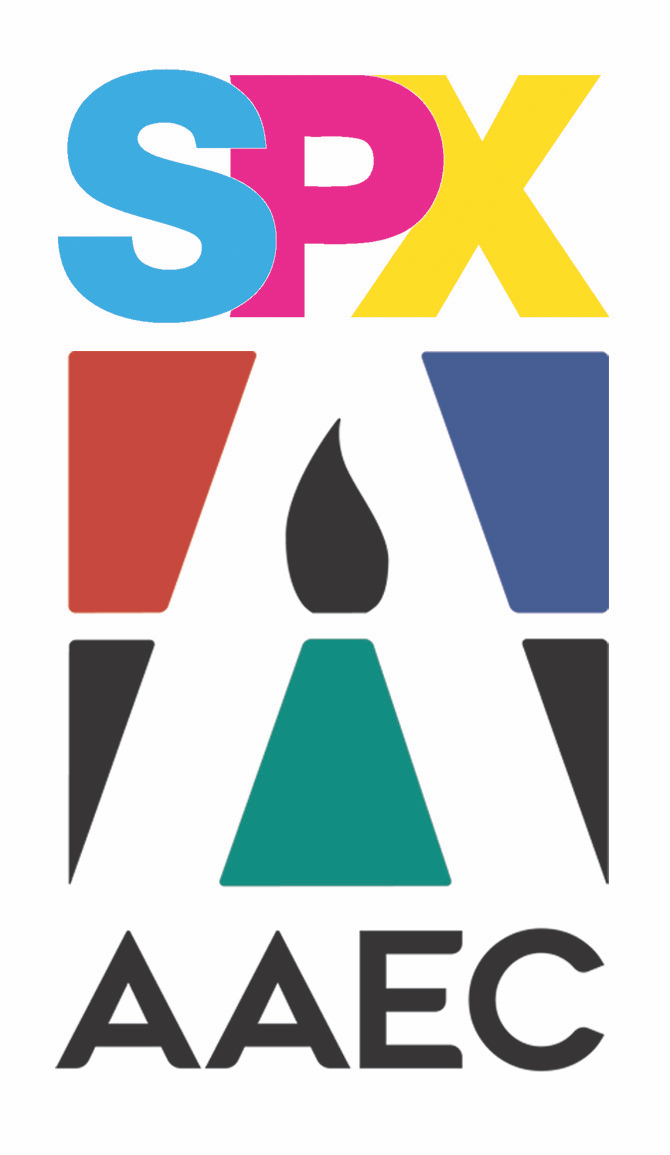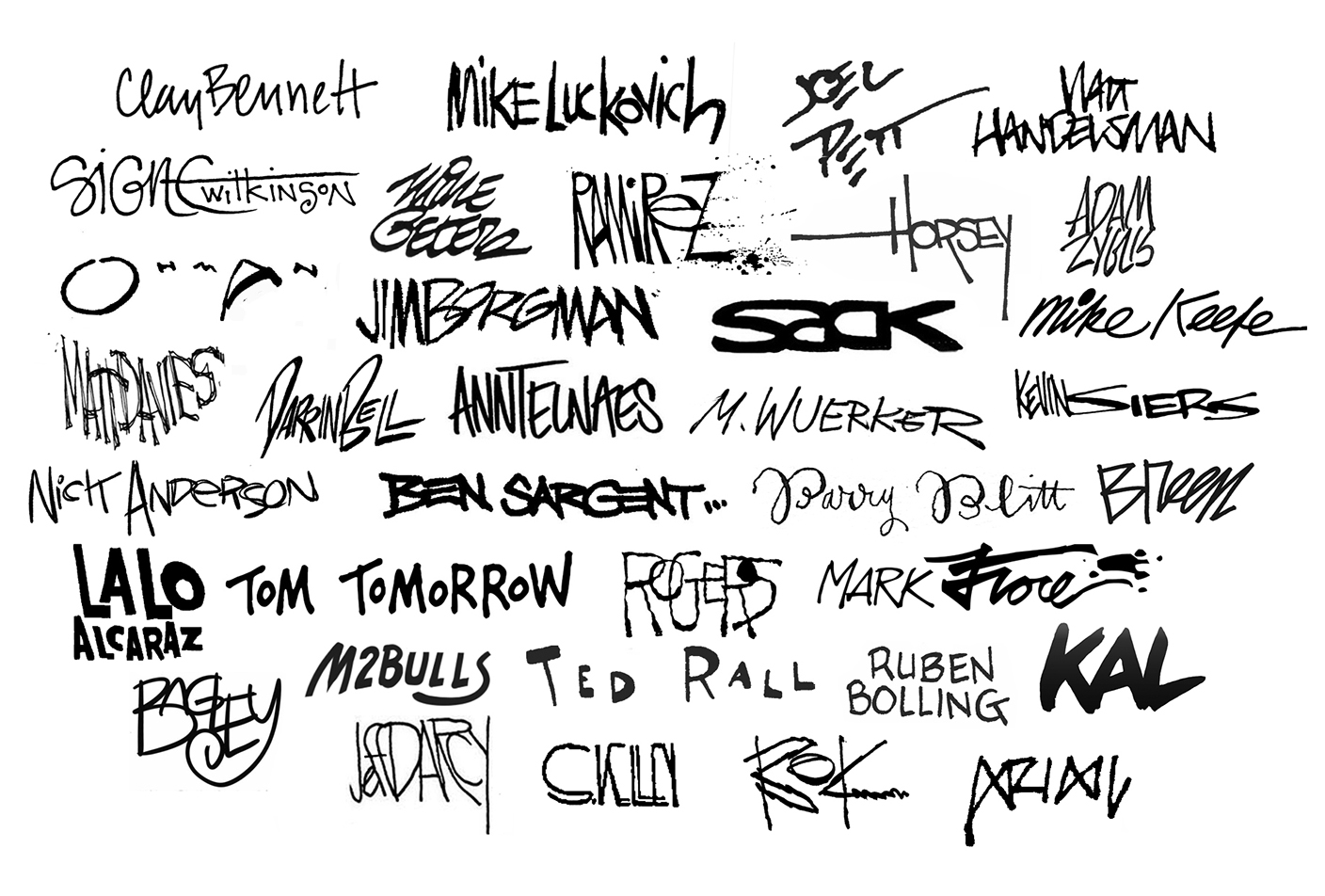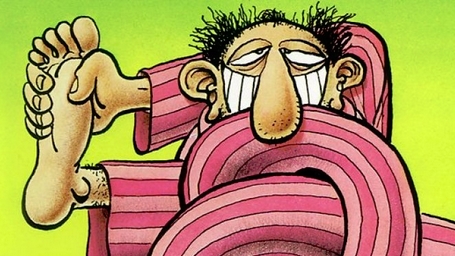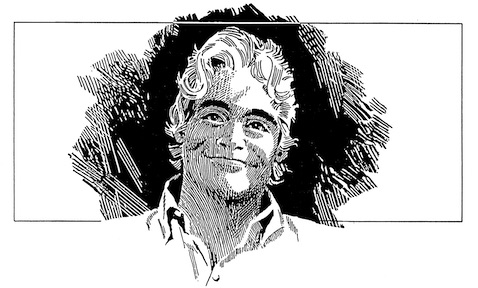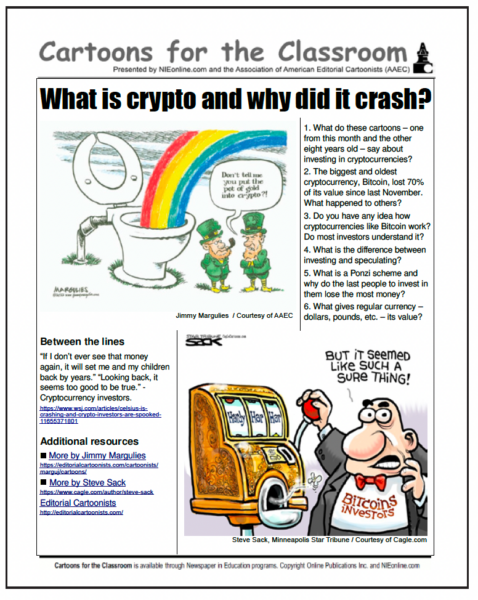[Update: Since this letter was fired off last week, more Pulitzer Prize winners and finalists have signed on to the protest, including 2020 winner Barry Blitt, and Pat Bagley, the longest-employed staff cartoonist at a daily newspaper.]
Ten days after the 2022 Pulitzer Prizes wereannounced, 35 cartoonists who have won or been finalists for the award signed an unprecedented open letter to the Pulitzer Board about recent changes to the prize.
After quietly expanding the parameters of the Editorial Cartoonist category in 2020 to include illustrators and graphic reporters, the Board that presides over the judging process for journalism’s biggest award renamed the category “Illustrated Reporting and Commentary” at the end of last year. This unannounced move came months after the Pulitzer Committeerefused to pick a winner among the three qualified finalists in 2021, and99 years after the Editorial Cartoonist” category was created.
Last week the AAECsent a letter to the Pulitzer Boardpetitioning the restoration of the award, and now almost three dozen recipients of the Prize are collectively seeking the same thing. Here is their letter in its entirety.
+ + + + + + + + + + + + + + + + + + + + + +
WE THE CARTOONISTS,
A letter to the Pulitzer Board from past Pulitzer prize-winners and finalists in the editorial cartooning category:
May 19th, 2022
Dear Pulitzer Prize Board,
We are dismayed to see the Editorial Cartooning category removed from the annual conferring of Pulitzer Prizes. From America’s inception, the editorial cartoon has crystallized our messy political struggle. Iconic historic images — like Benjamin Franklin’s “Join or Die” woodcut, Thomas Nast’s plutocrat with a money bag head, and Herblock’s cartoon coining the term “McCarthyism” — all sprung from the minds of individual cartoonists drawing visceral, emotional, and urgent opinions, in response to the news events of their day. The greatest American editorial cartoons draw on every inch of the First Amendment to, as John Stuart Mill wrote in On Liberty, “push arguments to their logical limits.”
For 100 years the distinguished Pulitzer Prize has walked hand-in-hand with the idiosyncratic editorial cartoonist, elevating the gritty public artform by (almost) annually bestowing its revered prize upon the “best” of the craft. This partnership has allowed publishers with intestinal fortitude to keep a seat for the local cartoonist on the newspaper Editorial Board, justifying their employment with the weight of the award. This has, without a doubt, nurtured the vitality of the medium and helped our nation weather its political discourse for the better.
While the landscape of print journalism has changed, and far fewer practitioners of the form are employees of newspapers, those newspapers still print scores of editorial cartoons every day. Added to that, there are now more editorial cartoonists than ever reaching their audiences directly via the digital screen. Our numbers are more stylistically, ethnically, and gender diverse. The conferring of a cartooning Pulitzer Prize continues to be a powerful affirmation of support, even more valuable for artists vying in today’s raucous public discourse.
So, it is with alarm that we see the Editorial Cartoon prize morph into a nebulous award for “Visual Reporting and Commentary.” In Journalism, reporting always emanated from a newsroom, and commentary from the very deliberately walled-off editorial opinion factory. This American tradition should not be watered down and as we witness our country’s intensifying political divide, it feels like a dangerous moment to abandon us dagger-penned town criers.
We fully understand the need to acknowledge and elevate important new forms of journalism, including powerful visual storytelling, like the ones you honored in 2022, 2018, and in 1992 when the Pulitzer Committee bestowed a Special Citation on Art Spiegelman’s Maus. But because these formats employ drawn visuals doesn’t mean they are the same as an editorial cartoon. Readers of the news have always treasured the quick and rude interlude offered by the ink-spattered rectangles nestled within the ocean of important words.
And lest we forget, cartoonists draw our arguments using satire, a scarce commodity in journalism, but one that helps stick a message instantaneously and memorably in ways even the finest writing cannot. We mock the powerful, reduce tyrants to sniveling caricatures and twist demagogues’ own words against them. A serious illustrated reporting piece serves a notably different purpose.
As grateful beneficiaries of the Pulitzer’s gravitas, we agree with the Association of American Editorial Cartoonists’ plea to restore the original Editorial Cartooning prize while also — as is done for multiple writing and photography categories — retaining the new prize created for Illustrated Reporting.
In 1922, the first Pulitzer Prize for cartooning was awarded to Rollin Kirby for The March To Moscow. In 2022, We The Cartoonists hope to continue our march with the Pulitzer Prizes still at our side, with categories honoring all, fittingly.
Respectfully and sincerely,

+ + + + + + + + + + + + + + + + + + + + + +
The signers include past Prize winners Matt Davies (2004), Clay Bennett (2002), Mike Luckovich (1995, 2006), Joel Pett (2000), Walt Handelsman (1997, 2007), Signe Wilkinson (1992), Mike Peters (1981), Michael Ramirez (1994, 2008), David Horsey (1999, 2003), Adam Zyglis (2015), Jack Ohman (2016), Jim Borgman (1991), Steve Sack (2013), Mike Keefe (2011), Darrin Bell (2019), Ann Telnaes (2001), Matt Wuerker (2012), Kevin Siers (2014), Nick Anderson (2005), Ben Sargent (1982), Steve Breen (1998, 2009), Barry Blitt (2020) and Mark Fiore (2010), along with finalists Lalo Alcaraz, Marty Two Bulls Jr, Ruben Bolling, Ted Rall, Tom Tomorrow, Rob Rogers, Robert Ariail, Jeff Darcy, Steve Kelley, Chip Bok, Pat Bagley and Kevin “Kal” Kallaugher.
